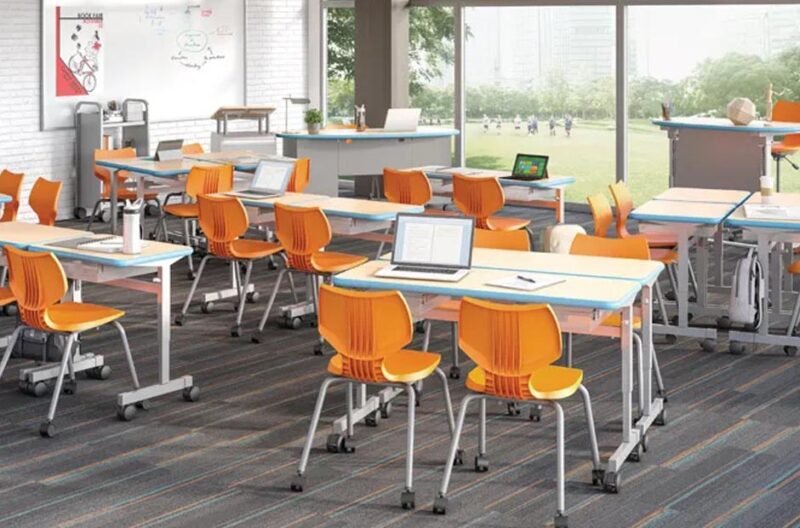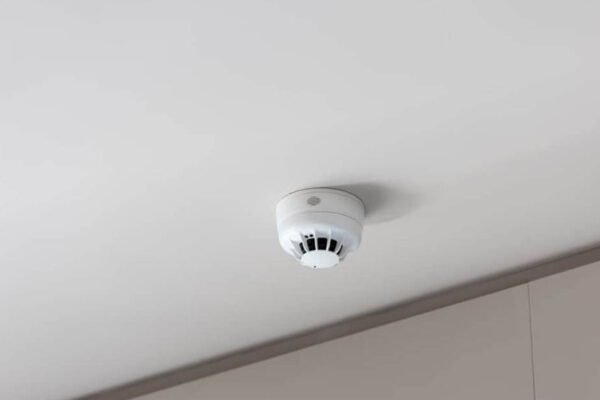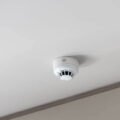
The selection of school furniture, particularly classroom tables, is vital in shaping the learning environment for students. The needs of elementary and secondary education students vary significantly, necessitating different considerations in classroom desk selection. This article explores at factors to consider when choosing classroom desks for elementary and secondary education settings, aiming to provide an optimal learning environment for students of all ages.
Ergonomics and Size Appropriateness
Ergonomics is crucial in selecting desks for any educational level. For elementary students, desks should accommodate their diminutive stature and facilitate good posture. Adjustable desks or desks in various sizes can be beneficial to cater to the diverse heights and sizes of younger students. In secondary education, ergonomics remains essential, but desks can be more significant to accommodate older students’ increased size. Desks for more senior students should also allow for comfortable seating for extended periods, as secondary students typically spend more time seated in classrooms. Proper ergonomic design helps maintain students’ focus and reduces fatigue, which is essential for both age groups.
Durability and Material
The durability of desks is essential, given the daily wear and tear in school environments. Elementary school designs must be sturdy and withstand activities that younger children might engage in, such as leaning or climbing. Materials like solid wood or reinforced plastic are ideal. For secondary schools, desks should also be durable but may need to be more sophisticated, with materials that can support heavier books and technology like laptops or tablets. The choice of material should also consider the ease of cleaning and maintenance, given the frequent use and the need for hygiene in schools.
Storage and Functionality
Storage features in desks are essential in elementary classrooms, where students may need space to store art supplies, books, and personal items. Desks with built-in storage, like cubbies or drawers, can be helpful too. While storage is still necessary for secondary education, the focus shifts towards functionality for different subjects. Desks need to accommodate more advanced technology or be adaptable to different teaching styles and subjects. Secondary students often have more materials like textbooks, notebooks, and electronic devices, so desks with ample storage and workspace are ideal.
Safety and Accessibility
Safety is a primary concern in any educational environment. Rounded corners and non-toxic materials are essential for elementary desks to prevent injuries. The desks should also be appropriately sized in order to avoid strain or discomfort. In secondary schools, safety still matters, but there is an added focus on accessibility. Desks should cater to the diverse needs of all students, including those with disabilities, ensuring that every student has access to learning opportunities. The layout and height of the desks should accommodate students with different physical abilities, ensuring inclusivity and comfort for all.
Design and Aesthetics
The design and aesthetics of desks can influence the learning environment. In elementary schools, colorful and creatively designed desks can stimulate learning and make the classroom more inviting. In contrast, secondary students may appreciate a more mature and minimalist design that resonates with their age group and facilitates a focused learning environment. The aesthetic appeal of desks can also reflect the school’s ethos and educational philosophy, contributing to a sense of identity and community within the school.
Flexibility for Different Learning Environments
Flexibility is vital in modern education. For elementary classrooms, desks should be lightweight and easy to move or reconfigure for group activities. Desks on wheels or modular furniture can be ideal. In secondary education, flexibility also matters, especially for accommodating different learning styles and group projects. Desks that can be easily rearranged for lectures, discussions, or group work are beneficial. This adaptability is crucial for fostering collaborative learning and accommodating various teaching methods, making the classroom more dynamic and engaging for older students.
Cost-Effectiveness
Budget constraints are often a reality in educational settings. Investing in durable desks that can withstand years of use is cost-effective in the long run for elementary schools. In secondary schools, the focus may be more on functionality and adaptability, which can sometimes come at a higher cost. However, investing in quality furniture that meets the diverse needs of older students can be a wise long-term investment. Finding a balance between affordability, quality, and functionality is critical, ensuring that the desks serve their purpose effectively without causing undue financial strain on the school.
Conclusion
In conclusion, choosing suitable classroom desks for elementary and secondary education requires careful consideration of various factors, including ergonomics, durability, storage, safety, design, flexibility, and cost. By addressing these factors, educational institutions can provide desks that meet students’ functional requirements at different educational levels and enhance the overall learning experience. The right desk can make a difference in a student’s comfort and engagement, contributing positively to their educational journey.









